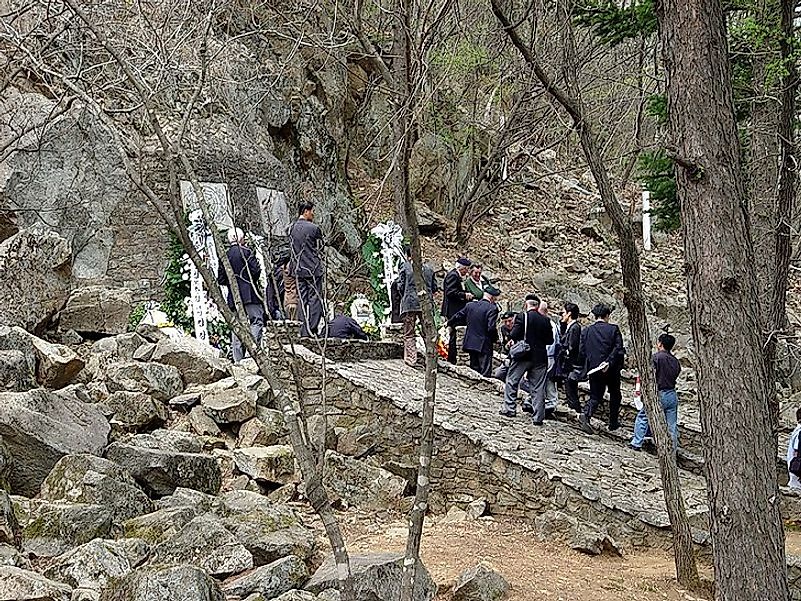The Battle Of Imjin River - Korean War

5. Background
The Battle of Imjin River goes by many names. In China, it’s known as the Battle of Xuemali, while in South Korea, it’s known as the Battle of Gloster Hill. This battle was an important military engagement that was part of the Korean War. The battle was fought between Chinese forces and United Nations (UN) troops between the dates of April 22nd and April 25th, 1951. It took place in the Imjin River Valley that lies about 3 miles north of the 38th parallel in North Korea. The Battle of Imjin River occurred simultaneously with another battle, the Battle of Kapyong, which mostly involved Canadian and Australian units against opposing Communists. The battle at Imjin River began when Chinese troops attacked the UN positions on the lower regions of the Imjin River. This was part of an attempt to capture the South Korean capital of Soul. It was part of the Chinese Spring Offensive, and an attempt to try and regain the battle grounds previously lost to UN counteroffensive forces the previous month, in March of 1951.
4. Makeup
The opposing sides in the battle were the Chinese Army, in support of the North Korean Communist regime, against a host of UN troops that featured the United States’ military, British forces, Canadian forces, Australian forces, Belgium forces, Luxembourg, New Zealand, South Korean forces, and the Philippines. The Chinese commander was General Pend Dehuai assisted by Yang Dezhi, Fu, Chongbi, Xiao Yingtang and Zeng Siyu, while each of the UN forces’ brigades were commanded by different leaders from their respective nations. The commanders on the UN side included Brigadier General Matthew Ridgway from the United States, Thomas Brodie from the United Kingdom, Albert Crahay from Belgium, Dianisio S. Ojeda from the Philippines, Joseph Wagener from Luxembourg, and Kang Mun Bong from the Republic of South Korea. The Chinese units included the 19th Army, the 63rd Army, the 64th Army, the 65th Army and the 8th Artillery Division. On the UN side, there were the 29th Infantry Brigade from the United Kingdom, the 1st Infantry Division from South Korea, the Belgian battalions, the Luxembourg platoons, the 3rd Infantry Division from the U.S., and the 10th Battalion from the Philippines.
3. Description
The battle began on the night of April 22nd, 1951, when a Chinese patrol on the northern banks of the river advanced towards the Belgians and the two brigades on which they depended. Elements of the 29th Brigade employed to ward off the Chinese were easily repelled and since they could not secure the bridges, the Belgian brigade manning the northern banks of the river was in danger of separation from the rest of the 29th Brigade. The Chinese would soon make a series of attacks across all the flanks of the UN troops and, on the morning of the 23rd of April, they appeared headed for victory, which prompted U.S. troops to assist the Belgians withdraw from the northern banks of the river.
2. Outcome
While the UN combined forces succeeded in keeping the Chinese from assuming a domineering position around the South Korean capital, outcomes were disputed and both sides experienced heavy losses. Continued Chinese pressure prompted the UN troops to withdraw, and even this withdrawal would face a major challenge as well, due to the fact the Chinese troops dominated parts of the high ground along the lines of retreat and were therefore at a better position to inflict heavier casualties on the withdrawing troops. By the time it was all over, casualties included 141 British soldiers killed and 1,169 wounded, missing or captured, 12 Belgian soldiers killed and 5 Philippine soldiers killed. On the Chinese side, over 10,000 casualties were reported.
1. Significance
The Battle of the Imjin River exposed massive tactical flaws on the Chinese side. Indeed, it is argued that if they would have been more tactical in the initial stages of the assault, they would have achieved an earlier breakthrough and compromised the positions of the UN troops. The battle also exposed the lack of defensive preparedness on the part of UN troops, who were nonetheless hailed for their resilience in disrupting the Chinese offensive and causing it to lose momentum. Today, the Gloucester Valley Battle Monument stands on the site of Hill 235 of the battlegrounds, just south of the Imjin River. Here, British Infantry of the Gloucestershire Regiment bravely stood their ground against the Communists. Philip Curtis was awarded the Victoria Cross posthumously for his valiant efforts as part of the regiment in the battle in which he died.











